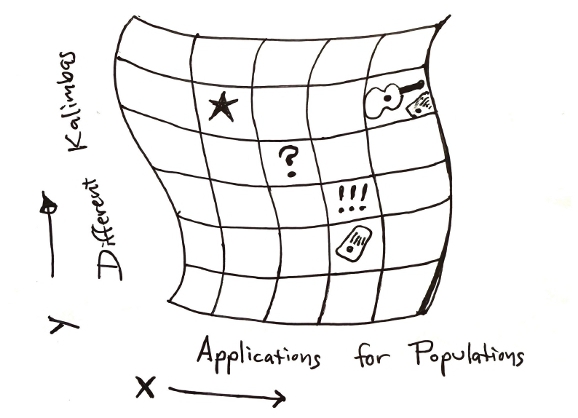
Use of this website constitutes acceptance of the Privacy Policy and User Agreement. Copyright © 2020 Kalimba Magic. All Rights Reserved.
Many kalimbas – such as the Alto, the Treble, and the Pentatonic 11-Note kalimbas – have a range of two or more octaves. In my mind, this is where the playing really gets to be interesting. This tip relates the lower octave scale to the upper octave scale on the Alto kalimba.
The Alto kalimba tablature here starts at the bottom and works up. The first measure shows the upper octave of the G major scale, while the second measure shows the lower octave of the G major scale. The two scales have the exact same note names: G A B C D E F# G (you can tell by tracing a note down the tine to the letters at the bottom). The character of these scales is identical, in that the notes alternate from left to right and incrementally move outward, farther left and farther right to ascend the scale.
What is different between the scales? The lower scale starts right in the center of the instrument, playing on the longest tines while the upper scale starts halfway up one of the sides. But the thing you need to pay attention to is the hands have been reversed. The upper octave goes left – right – left – right, while the lower octave goes right – left – right – left.
This reversal has some interesting consequences – stay tuned if you want to know what they are!


Sign up for our newsletter and free resources with your email address:
We pinky promise not to spam you and to only send good stuff.
Use of this website constitutes acceptance of the Privacy Policy and User Agreement. Copyright © 2020 Kalimba Magic. All Rights Reserved.
Notifications